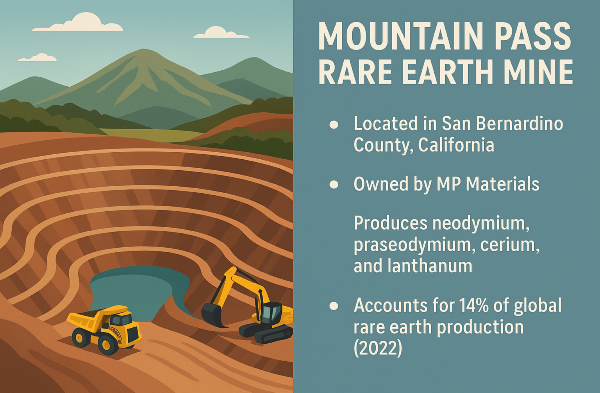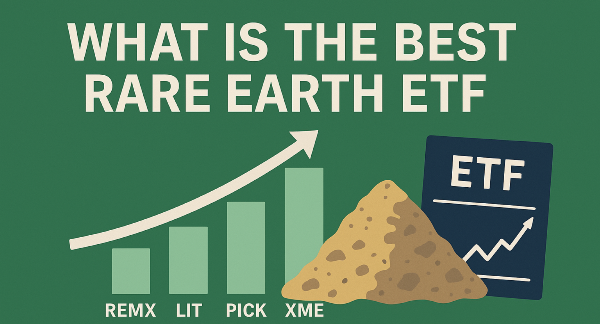Key Takeaways
To earn $100 a month in dividends, you'd generally need about $30,000 to $40,000 invested in dividend stocks with a 3–4% annual yield. Your exact required investment depends on the yield—higher-yield stocks demand less capital but may carry higher risk or less growth potential.
Introduction
Dividend investing is a powerful strategy for generating passive income, allowing investors to earn regular payouts simply by holding shares of well-established companies. The goal of this approach is to build a portfolio that generates at least $100 per month in dividends, providing a steady stream of income without the need for constant trading or speculation. This method is particularly appealing for those seeking financial independence, as reinvesting dividends over time can significantly accelerate wealth accumulation. By strategically selecting dividend-paying stocks or ETFs, investors can create a reliable income source that grows with compounding, ultimately leading to greater financial security and long-term stability.
Step 1: Understand Dividend Investing
Dividend investing revolves around earning passive income through company payouts to shareholders, typically from corporate profits. These dividends can be distributed as cash payments or additional shares, offering a steady income stream without the need for active trading. Investors often choose between high-yield stocks, which provide larger immediate payouts but may have lower growth potential, and dividend growth stocks, which consistently increase dividends over time, often offering stronger long-term returns. Key metrics like dividend yield (the annual dividend divided by stock price), payout ratio (the percentage of earnings paid as dividends), and dividend history (a company's track record of payouts) help investors assess reliability and sustainability. Understanding these factors is crucial for building a stable and profitable dividend portfolio.
Step 2: Set Your Investment Target
Setting a clear investment target is essential for building a reliable dividend income stream. To generate $100 per month ($1,200 per year) in dividends, investors must determine the required capital based on dividend yield. For instance, if the average yield of selected stocks is 4%, a portfolio of approximately $30,000 is needed. A higher-yield strategy—say, 5%—requires only $24,000, while a lower-yield approach (3%) would demand $40,000.
Beyond numbers, portfolio diversification plays a crucial role in reducing risk. Spreading investments across multiple sectors—such as consumer staples, healthcare, and utilities—ensures stability even if one industry underperforms. Combining dividend growth stocks with high-yield options balances long-term gains with consistent income, strengthening the portfolio against market fluctuations. By strategically selecting and allocating investments, investors can steadily work toward their passive income goals while maintaining financial security.
Step 3: Choose the Right Dividend Stocks
Selecting the right dividend stocks is crucial for building a reliable income stream. Investors should prioritize stable companies with a track record of consistent payouts, strong financial health, and sustainable earnings. One popular approach is investing in Dividend Aristocrats—companies that have increased dividends for at least 25 consecutive years, signaling resilience through market cycles. These stocks typically offer reliable dividend growth, making them ideal for long-term wealth accumulation.
On the other hand, high-yield stocks provide larger upfront payouts but may carry higher risks, such as declining business performance or potential dividend cuts. To strike a balance, investors should analyze key factors like payout ratio, revenue stability, and sector trends. Some popular dividend-paying stocks include Johnson & Johnson (JNJ), Procter & Gamble (PG), and Realty Income (O), each known for their strong dividend history. By carefully selecting diversified and financially sound companies, investors can optimize dividend income while minimizing risk.
Step 4: Build Your Portfolio
Building a dividend portfolio requires smart allocation across different sectors to balance risk and stability. A diversified portfolio might include consumer staples, healthcare, utilities, and real estate, as these sectors tend to have consistent dividend payouts even during economic downturns. Including growth-oriented stocks alongside high-yield options can also help sustain long-term income.
For those seeking simplicity and diversification, dividend-focused ETFs like Vanguard High Dividend Yield ETF (VYM) or Schwab U.S. Dividend Equity ETF (SCHD) offer exposure to multiple dividend-paying stocks while reducing single-company risk.
Another key decision involves choosing between tax-advantaged accounts (like Roth IRAs or 401(k)s) and taxable brokerage accounts. Holding dividend stocks in tax-advantaged accounts can minimize tax burdens, allowing for tax-free growth or tax-deferred compounding, while taxable accounts provide flexibility and unrestricted access to dividend income. By strategically managing holdings across these accounts, investors can maximize returns and minimize taxes.
Step 5: Reinvest and Grow Income
Reinvesting dividends is a powerful strategy for growing passive income over time. One of the most effective methods is utilizing Dividend Reinvestment Plans (DRIP), which automatically reinvest cash dividends to purchase more shares of the same stock. This approach enhances compounding, as each reinvested dividend increases future payouts, accelerating portfolio growth without requiring additional capital. Over time, even modest investments can snowball into significant income streams.
The decision between reinvesting vs. taking payouts depends on individual financial goals. Investors focused on long-term growth often opt to reinvest, maximizing future returns. Meanwhile, those seeking immediate cash flow for expenses or financial independence may prefer taking payouts. A hybrid strategy—partially reinvesting while withdrawing some income—can balance growth and stability, ensuring steady returns while continuing to build wealth.
Common Challenges & How to Overcome Them
Dividend investing offers stability, but it’s not without challenges. Market fluctuations can impact stock prices and, in some cases, lead to dividend cuts—particularly if a company’s earnings decline or it prioritizes reinvestment over payouts. To mitigate this risk, investors should focus on financially strong companies with a consistent dividend track record and diversify across sectors to reduce exposure to economic downturns.
For those investing on a tight budget, strategies like fractional shares allow gradual portfolio building without requiring large capital. ETFs, such as Vanguard High Dividend Yield ETF (VYM) or Schwab U.S. Dividend Equity ETF (SCHD), also provide diversified dividend income with lower entry costs.
Alternative income strategies like covered calls offer an additional layer of cash flow by selling call options on dividend stocks, generating premium income alongside dividends. Real Estate Investment Trusts (REITs) are another option, providing high-yield payouts while diversifying beyond traditional equities. By combining these approaches, investors can enhance their passive income stream and maintain stability despite market challenges.
Conclusion
Building a $100-per-month dividend income stream requires a strategic and disciplined approach. By understanding dividend investing fundamentals, setting an achievable investment target, carefully selecting high-quality dividend stocks, and diversifying a portfolio, investors can create a reliable source of passive income. The key to success lies in reinvesting dividends, leveraging compounding growth, and consistently refining investment strategies to adapt to market conditions.
Patience and consistency are essential. Dividend investing is a long-term game, where steady contributions and smart reinvestment decisions compound over time. While short-term market fluctuations may occur, a well-structured dividend portfolio can provide financial stability and future independence.
🚀 Your Ultimate Guide to Dividend Investing! 💰
Want to build reliable passive income? Looking to live off dividends? Start here with the top dividend insights:
🏆 Top Dividend Stock Picks
💰 Passive Income & Dividend Investing Strategies
🔍 How Much to Invest for BIG Dividend Income
⚡ Dividend Taxes & Smart Selling Strategies
🔗 Bookmark this guide & start building your dividend wealth today! 🚀💸




























Key Takeaways
To earn $100 a month in dividends, you'd generally need about $30,000 to $40,000 invested in dividend stocks with a 3–4% annual yield. Your exact required investment depends on the yield—higher-yield stocks demand less capital but may carry higher risk or less growth potential.
Introduction
Dividend investing is a powerful strategy for generating passive income, allowing investors to earn regular payouts simply by holding shares of well-established companies. The goal of this approach is to build a portfolio that generates at least $100 per month in dividends, providing a steady stream of income without the need for constant trading or speculation. This method is particularly appealing for those seeking financial independence, as reinvesting dividends over time can significantly accelerate wealth accumulation. By strategically selecting dividend-paying stocks or ETFs, investors can create a reliable income source that grows with compounding, ultimately leading to greater financial security and long-term stability.
Step 1: Understand Dividend Investing
Dividend investing revolves around earning passive income through company payouts to shareholders, typically from corporate profits. These dividends can be distributed as cash payments or additional shares, offering a steady income stream without the need for active trading. Investors often choose between high-yield stocks, which provide larger immediate payouts but may have lower growth potential, and dividend growth stocks, which consistently increase dividends over time, often offering stronger long-term returns. Key metrics like dividend yield (the annual dividend divided by stock price), payout ratio (the percentage of earnings paid as dividends), and dividend history (a company's track record of payouts) help investors assess reliability and sustainability. Understanding these factors is crucial for building a stable and profitable dividend portfolio.
Step 2: Set Your Investment Target
Setting a clear investment target is essential for building a reliable dividend income stream. To generate $100 per month ($1,200 per year) in dividends, investors must determine the required capital based on dividend yield. For instance, if the average yield of selected stocks is 4%, a portfolio of approximately $30,000 is needed. A higher-yield strategy—say, 5%—requires only $24,000, while a lower-yield approach (3%) would demand $40,000. Beyond numbers, portfolio diversification plays a crucial role in reducing risk. Spreading investments across multiple sectors—such as consumer staples, healthcare, and utilities—ensures stability even if one industry underperforms. Combining dividend growth stocks with high-yield options balances long-term gains with consistent income, strengthening the portfolio against market fluctuations. By strategically selecting and allocating investments, investors can steadily work toward their passive income goals while maintaining financial security.
Step 3: Choose the Right Dividend Stocks
Selecting the right dividend stocks is crucial for building a reliable income stream. Investors should prioritize stable companies with a track record of consistent payouts, strong financial health, and sustainable earnings. One popular approach is investing in Dividend Aristocrats—companies that have increased dividends for at least 25 consecutive years, signaling resilience through market cycles. These stocks typically offer reliable dividend growth, making them ideal for long-term wealth accumulation.
On the other hand, high-yield stocks provide larger upfront payouts but may carry higher risks, such as declining business performance or potential dividend cuts. To strike a balance, investors should analyze key factors like payout ratio, revenue stability, and sector trends. Some popular dividend-paying stocks include Johnson & Johnson (JNJ), Procter & Gamble (PG), and Realty Income (O), each known for their strong dividend history. By carefully selecting diversified and financially sound companies, investors can optimize dividend income while minimizing risk.
Step 4: Build Your Portfolio
Building a dividend portfolio requires smart allocation across different sectors to balance risk and stability. A diversified portfolio might include consumer staples, healthcare, utilities, and real estate, as these sectors tend to have consistent dividend payouts even during economic downturns. Including growth-oriented stocks alongside high-yield options can also help sustain long-term income.
For those seeking simplicity and diversification, dividend-focused ETFs like Vanguard High Dividend Yield ETF (VYM) or Schwab U.S. Dividend Equity ETF (SCHD) offer exposure to multiple dividend-paying stocks while reducing single-company risk.
Another key decision involves choosing between tax-advantaged accounts (like Roth IRAs or 401(k)s) and taxable brokerage accounts. Holding dividend stocks in tax-advantaged accounts can minimize tax burdens, allowing for tax-free growth or tax-deferred compounding, while taxable accounts provide flexibility and unrestricted access to dividend income. By strategically managing holdings across these accounts, investors can maximize returns and minimize taxes.
Step 5: Reinvest and Grow Income
Reinvesting dividends is a powerful strategy for growing passive income over time. One of the most effective methods is utilizing Dividend Reinvestment Plans (DRIP), which automatically reinvest cash dividends to purchase more shares of the same stock. This approach enhances compounding, as each reinvested dividend increases future payouts, accelerating portfolio growth without requiring additional capital. Over time, even modest investments can snowball into significant income streams.
The decision between reinvesting vs. taking payouts depends on individual financial goals. Investors focused on long-term growth often opt to reinvest, maximizing future returns. Meanwhile, those seeking immediate cash flow for expenses or financial independence may prefer taking payouts. A hybrid strategy—partially reinvesting while withdrawing some income—can balance growth and stability, ensuring steady returns while continuing to build wealth.
Common Challenges & How to Overcome Them
Dividend investing offers stability, but it’s not without challenges. Market fluctuations can impact stock prices and, in some cases, lead to dividend cuts—particularly if a company’s earnings decline or it prioritizes reinvestment over payouts. To mitigate this risk, investors should focus on financially strong companies with a consistent dividend track record and diversify across sectors to reduce exposure to economic downturns.
For those investing on a tight budget, strategies like fractional shares allow gradual portfolio building without requiring large capital. ETFs, such as Vanguard High Dividend Yield ETF (VYM) or Schwab U.S. Dividend Equity ETF (SCHD), also provide diversified dividend income with lower entry costs.
Alternative income strategies like covered calls offer an additional layer of cash flow by selling call options on dividend stocks, generating premium income alongside dividends. Real Estate Investment Trusts (REITs) are another option, providing high-yield payouts while diversifying beyond traditional equities. By combining these approaches, investors can enhance their passive income stream and maintain stability despite market challenges.
Conclusion
Building a $100-per-month dividend income stream requires a strategic and disciplined approach. By understanding dividend investing fundamentals, setting an achievable investment target, carefully selecting high-quality dividend stocks, and diversifying a portfolio, investors can create a reliable source of passive income. The key to success lies in reinvesting dividends, leveraging compounding growth, and consistently refining investment strategies to adapt to market conditions.
Patience and consistency are essential. Dividend investing is a long-term game, where steady contributions and smart reinvestment decisions compound over time. While short-term market fluctuations may occur, a well-structured dividend portfolio can provide financial stability and future independence.
🚀 Your Ultimate Guide to Dividend Investing! 💰
Want to build reliable passive income? Looking to live off dividends? Start here with the top dividend insights:
🏆 Top Dividend Stock Picks
💰 Passive Income & Dividend Investing Strategies
🔍 How Much to Invest for BIG Dividend Income
⚡ Dividend Taxes & Smart Selling Strategies
🔗 Bookmark this guide & start building your dividend wealth today! 🚀💸